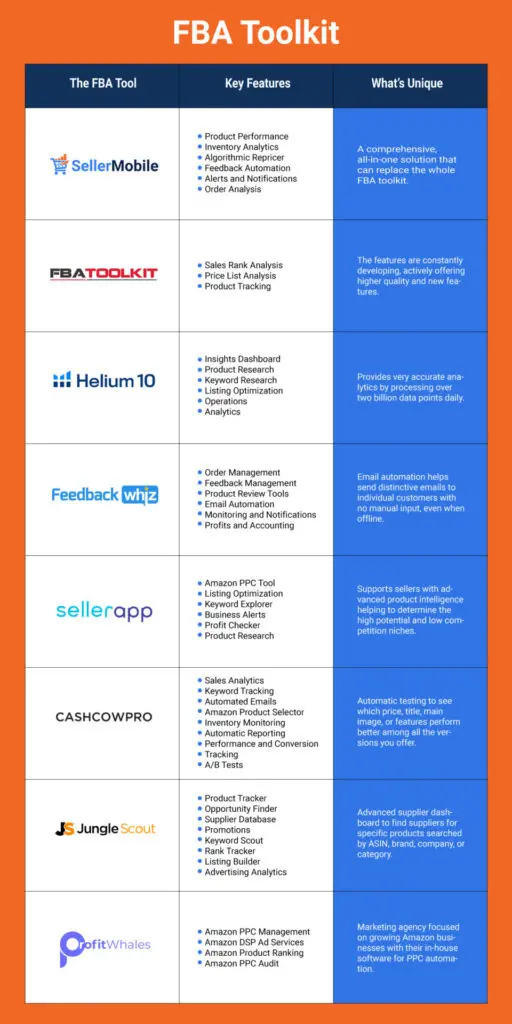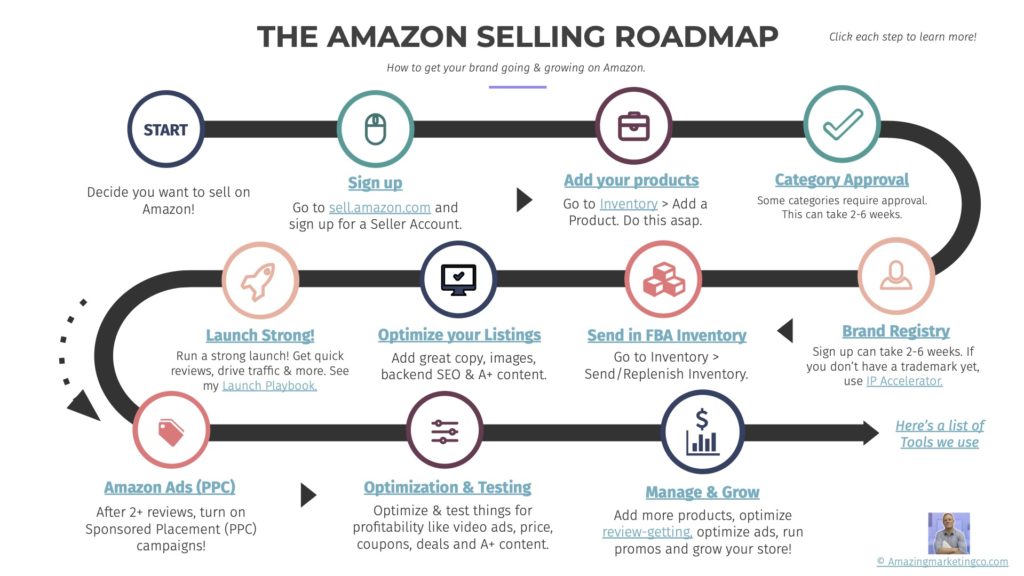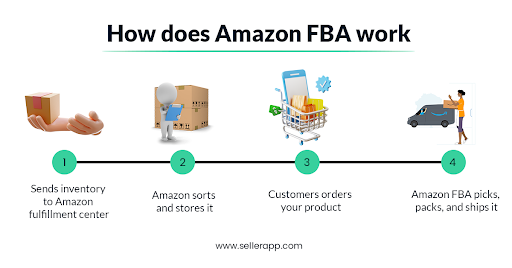Discover the top Amazon FBA fee tools to skyrocket your profits and streamline your online business like never before.
Table of Contents
- Introduction to Amazon FBA
- Understanding Amazon FBA Fees
- The Importance of Calculating FBA Fees
- Finding the Right Amazon FBA Fee Tools
- How to Use an Amazon FBA Fee Calculator
- Optimizing Profits Using Fee Calculators
- Avoiding Common Mistakes
- Advanced Tips for Experienced Sellers
- Keeping Updated With Fee Changes
- Summary
- FAQs
Introduction to Amazon FBA
Have you ever wondered how your favorite products magically appear on Amazon and get delivered to your doorstep with lightning speed? Well, that’s where Amazon FBA comes into play! Let’s dive into what Amazon FBA is all about and how it helps sellers like you.
What is Amazon FBA?
Amazon FBA stands for Fulfillment by Amazon. It’s like having your own personal team of superheroes who handle everything from storing your products in their warehouses to packing and shipping them out to customers. Sounds cool, right? This service allows sellers to focus on growing their business while Amazon takes care of all the nitty-gritty details of order fulfillment.
Understanding Amazon FBA Fees
When you sell products on Amazon using their Fulfillment by Amazon (FBA) service, there are various fees that you need to be aware of. These fees play a crucial role in determining your profits as a seller. In this section, we will break down the different types of Amazon FBA fees and why it is essential for sellers to understand them.
Types of FBA Fees
Amazon FBA fees can be categorized into different types, including fulfillment fees, storage fees, referral fees, and more. Fulfillment fees are charges for picking, packing, shipping, customer service, and returns processing. Storage fees are incurred for keeping your products in Amazon’s warehouses. Referral fees are a percentage of the selling price for each item sold. It’s important to be aware of these fees to accurately calculate your costs and profits.
The Importance of Calculating FBA Fees
Calculating your Amazon FBA fees is crucial for ensuring that you are making a profit as a seller on the platform. By accurately determining the fees associated with using Amazon FBA, you can have a clear understanding of your costs and make informed decisions to optimize your profits.

Image courtesy of marketgap.pro via Google Images
Why Accurate Calculations Matter
When you sell products through Amazon FBA, there are various fees that you need to consider, such as storage fees, fulfillment fees, and referral fees. If you miscalculate these fees or overlook some of them, you may end up setting prices that are too low, resulting in reduced profits, or prices that are too high, potentially driving away customers.
By using an Amazon FBA fee calculator to accurately estimate the fees associated with selling your products on the platform, you can ensure that you are pricing your items competitively while still making a profit. This tool allows you to input relevant information, such as product dimensions, weight, and selling price, to generate a breakdown of the fees you can expect to pay for each sale.
Additionally, accurate fee calculations can help you identify areas where you can potentially reduce costs. For example, by analyzing the fees associated with different product sizes or categories, you may discover that focusing on selling smaller, lighter items can result in lower fulfillment fees and higher profits.
Ultimately, by understanding and accurately calculating your Amazon FBA fees, you can make well-informed decisions that will help you optimize your selling strategy and maximize your earnings on the platform.
Finding the Right Amazon FBA Fee Tools
When it comes to selling on Amazon, understanding and calculating your fees accurately is crucial for maximizing your profits. To help with this, you can make use of Amazon FBA fee tools that simplify the process for you. But how do you find the right tools for your needs? Let’s explore.
Criteria for Good FBA Fee Tools
When selecting an Amazon FBA fee calculator, there are a few key features to consider:
1. Accuracy: Look for a tool that provides precise fee calculations based on current Amazon FBA rates. This ensures you have a clear picture of your costs.
2. User-Friendly Interface: Choose a tool that is intuitive and easy to navigate. You want a calculator that simplifies the process, not complicates it.
3. Customization Options: Opt for a calculator that allows you to input specific data about your products, such as dimensions and weight, for more accurate results.
4. Fee Breakdown: Find a tool that breaks down the different types of fees involved in selling on Amazon, such as referral fees, fulfillment fees, and storage fees, so you can plan accordingly.
By considering these criteria, you can find an Amazon FBA fee tool that meets your needs and helps you optimize your profits effectively.
How to Use an Amazon FBA Fee Calculator
Calculating Amazon FBA fees accurately is essential for sellers to maintain their profit margins. By using an Amazon FBA fee calculator, you can easily determine the costs associated with using Amazon’s fulfillment services. Here is a simple step-by-step guide on how to use these calculators effectively.

Image courtesy of sellermobile.com via Google Images
Step-by-Step Guide
1. Select a Reliable Calculator: Start by choosing a reputable Amazon FBA fee calculator. Look for one that is user-friendly and provides detailed breakdowns of the various fees involved in selling on Amazon.
2. Input Product Details: Enter the relevant information about the product you plan to sell, such as the selling price, shipping costs, and product dimensions. This data will help the calculator determine the fees associated with your product.
3. Calculate Amazon Referral Fee: The calculator will automatically calculate Amazon’s referral fee based on the category and selling price of your product. This fee is a percentage of the selling price that Amazon charges for each sale.
4. Include Fulfillment Fees: Input the weight and dimensions of your product to calculate the fulfillment fees charged by Amazon. These fees cover the storage, packing, and shipping of your product to customers.
5. Factor in Additional Fees: Some calculators also provide information on other potential charges, such as storage fees, long-term storage fees, and returns processing fees. Make sure to include these costs in your calculations to get a comprehensive overview of your expenses.
6. Analyze the Results: Once you have entered all the necessary details, review the calculated fees to understand the total cost of selling your product on Amazon. This information will help you determine the profitability of your product and make informed pricing decisions.
7. Adjust Your Strategy: If the fees seem too high or are eating into your profits, consider adjusting your pricing, product selection, or fulfillment methods to optimize your profitability on the platform.
By following these simple steps and utilizing an Amazon FBA fee calculator, you can gain valuable insights into the costs associated with selling on Amazon and make strategic decisions to maximize your profits.
Optimizing Profits Using Fee Calculators
When selling products through Amazon’s Fulfillment by Amazon (FBA) service, it’s essential to optimize profits by understanding and managing the associated fees. By utilizing Amazon FBA fee calculators effectively, sellers can strategize to minimize costs and maximize their earnings. Let’s explore how these tools can help sellers achieve better profit margins.
Strategies to Reduce Fees
One effective way to optimize profits is by reducing the fees incurred through the FBA service. Here are some practical strategies:
1. Efficient Inventory Management: By closely monitoring inventory levels and adjusting them based on demand, sellers can avoid storage fees for excess stock.
2. Price Optimization: Utilize fee calculators to determine the most cost-effective pricing strategies that balance competitive prices with maximizing profits after fees.
3. Minimize Returns: High return rates can increase FBA fees. Implement policies to reduce returns by providing accurate product descriptions and high-quality customer service.
4. Utilize Amazon Programs: Take advantage of programs like Fulfilled by Amazon Small and Light to lower fulfillment fees for smaller, lighter products.
5. Evaluate Product Size Tiers: Understand how Amazon categorizes products based on size and weight to select the most cost-efficient tier for your offerings.
By incorporating these strategies and leveraging Amazon FBA fee calculators, sellers can optimize profits and maintain a competitive edge in the e-commerce marketplace.
Avoiding Common Mistakes
When dealing with Amazon FBA fees, it’s crucial to be aware of common mistakes that sellers often make. By recognizing and avoiding these errors, you can ensure that your business remains profitable.

Image courtesy of amazingmarketingco.com via Google Images
One common mistake is failing to account for all the different types of fees associated with Amazon FBA. It’s essential to consider not just the fulfillment fees, but also storage fees, referral fees, and any other charges that may apply. By accurately calculating all expenses, you can make informed decisions about your pricing and overall strategy.
Another pitfall to avoid is relying solely on manual calculations instead of using an Amazon FBA fee calculator. Manual calculations are prone to errors and can result in inaccurate profit margins. By utilizing a reliable calculator, you can save time and ensure that your figures are correct.
Furthermore, some sellers overlook the impact of changes in fees over time. Amazon frequently adjusts its fee structure, so it’s important to stay informed and update your calculations accordingly. Failing to account for fee changes can lead to unexpected costs that eat into your profits.
Lastly, a common mistake is underestimating the importance of optimizing your product listings to increase sales velocity. By improving your product rankings and attracting more customers, you can offset some of the fees associated with Amazon FBA. Ignoring this aspect of your business can result in lower profits and missed opportunities.
Advanced Tips for Experienced Sellers
As an experienced seller utilizing Amazon FBA, you may already be familiar with the basic concepts of fee calculations. To further enhance your profitability and efficiency, consider adopting some advanced tips:
Leverage Data for Decision Making
Seasoned sellers can benefit significantly from leveraging the data provided by fee calculators to make informed business decisions. By analyzing trends in your fee structures over time, you can identify areas where costs are escalating and take proactive measures to mitigate them. Additionally, understanding the impact of various fees on your overall profit margins can help you strategize better and optimize your selling approach.
| Tool Name | Features | Pricing |
|---|---|---|
| SellerMobile | Fee calculator, profit tracking, inventory management | Starting at $29/month |
| Jungle Scout | Product research, sales analytics, fee calculator | Starting at $39/month |
| Helium 10 | Keyword research, listing optimization, FBA fee calculator | Starting at $97/month |
By delving deep into the data provided by fee calculators, you can uncover valuable insights that may not be apparent at first glance. Whether it’s identifying specific products or categories that incur higher fees or pinpointing operational inefficiencies that contribute to increased costs, this data-driven approach can lead to smarter decision-making and enhanced profitability.
Keeping Updated With Fee Changes
As a seller using FBA Amazon services, it’s crucial to stay informed about any alterations to the fee structures. Being aware of these changes can help you adjust your pricing strategies and maintain your profit margins. Here are some tips on how to stay updated with the latest fee modifications:

Image courtesy of www.sellerapp.com via Google Images
Staying Informed
1. Regularly check Amazon’s seller central portal for updates on fee changes. This platform provides essential information on any alterations to fees and guidelines that may affect your business.
2. Subscribe to relevant newsletters or email updates from Amazon. By doing so, you will receive notifications directly in your inbox whenever there are changes to the FBA fees.
3. Join seller forums or online communities where sellers discuss their experiences with FBA fees and share information on any changes they have encountered. This can provide valuable insights and updates that you may have missed.
By staying informed and proactive about fee changes, you can adapt your business strategies accordingly and optimize your profits while using Amazon FBA services.
Summary
In this blog post, we explored the world of Amazon FBA and how sellers can optimize their profits by understanding and accurately calculating Amazon FBA fees. Let’s recap the main points discussed:
Recap of Important Points
We started by introducing the concept of Amazon FBA, which stands for Fulfillment by Amazon. This service allows sellers to store their products in Amazon’s fulfillment centers and have Amazon handle the packing, shipping, and customer service. By using Amazon FBA, sellers can reach a wider customer base and enjoy the benefits of Amazon’s trusted brand.
We then delved into the various types of Amazon FBA fees that sellers need to be aware of. Understanding these fees, such as storage fees, fulfillment fees, and referral fees, is crucial for sellers to accurately calculate their costs and maintain healthy profit margins.
To help sellers navigate the complex world of Amazon FBA fees, we highlighted the importance of using an Amazon FBA fee calculator. By accurately calculating fees, sellers can make informed decisions on pricing and inventory management to maximize their profits.
We also provided guidance on finding the right Amazon FBA fee tools by outlining key criteria to consider when choosing a fee calculation tool. Additionally, we offered a step-by-step guide on how to use these calculators effectively to determine fees for individual products or entire shipments.
Furthermore, we shared strategies to help sellers optimize their profits using fee calculators. By implementing these tips and tricks, sellers can reduce their Amazon FBA fees and increase their bottom line.
Lastly, we discussed common mistakes to avoid when calculating Amazon FBA fees and provided advanced tips for experienced sellers on leveraging data for decision-making. We emphasized the importance of staying informed about fee changes to adapt quickly and make informed decisions for their business.
By understanding Amazon FBA fees and utilizing fee calculation tools effectively, sellers can optimize their profits and thrive in the competitive world of e-commerce.
FAQs
What is Amazon FBA and why is it important?
Amazon FBA stands for Fulfillment by Amazon, a service where sellers send their products to Amazon’s fulfillment centers, and Amazon takes care of storage, packing, and shipping when a customer makes a purchase. It’s important because it allows sellers to reach a wider audience and offer fast shipping through Amazon’s trusted network.
What are the different types of fees associated with Amazon FBA?
There are various fees sellers need to be aware of when using Amazon FBA, including storage fees, fulfillment fees, referral fees, and more. These fees can impact a seller’s profit margins, so it’s crucial to understand and calculate them accurately.
Why is it necessary to calculate Amazon FBA fees accurately?
Accurately calculating Amazon FBA fees is essential for sellers to determine their true costs and profitability. By knowing the fees upfront, sellers can price their products effectively, maintain profit margins, and make informed decisions about their business.
How can I find the right Amazon FBA fee calculator?
When looking for a fee calculation tool, it’s important to consider features like ease of use, accuracy, real-time fee updates, and cost-efficiency. There are various online tools available, and selecting one that meets your specific needs can help streamline your business operations.
What are some strategies to reduce Amazon FBA fees?
To minimize Amazon FBA fees, sellers can optimize their product listings, improve packaging efficiency, bundle products, remove slow-moving inventory, and use fulfillment centers strategically. By implementing these strategies, sellers can cut costs and boost their profits.
What are common mistakes to avoid when calculating Amazon FBA fees?
Common mistakes sellers make when calculating Amazon FBA fees include underestimating shipping costs, not considering storage fees, failing to account for referral fees, and overlooking additional charges. Avoiding these errors can help sellers avoid unexpected costs and maintain profitability.
How can experienced sellers leverage data from fee calculators for decision-making?
Experienced sellers can use data from fee calculators to analyze trends, identify opportunities for growth, streamline operations, and optimize pricing strategies. By leveraging this information, seasoned sellers can make informed decisions to maximize their profits and stay competitive in the Amazon marketplace.
Why is it important to stay updated with changes to Amazon’s FBA fee structure?
Staying informed about any updates to Amazon’s FBA fee structure is crucial for sellers to adapt their pricing strategies, adjust their inventory management, and forecast their expenses accurately. By keeping abreast of fee changes, sellers can proactively manage their costs and maintain their competitiveness on the platform.
